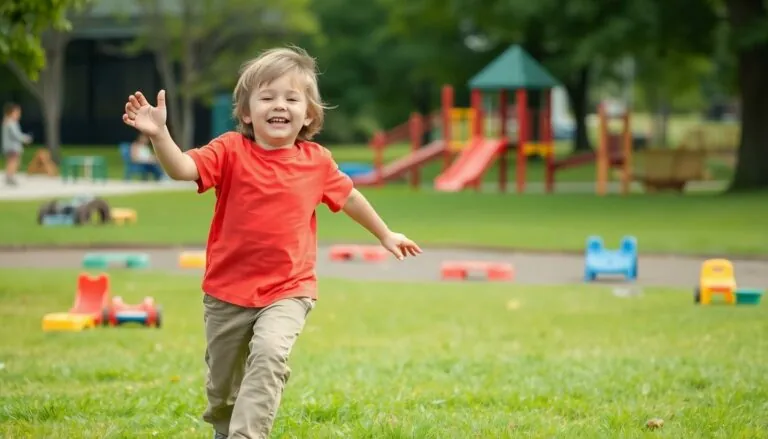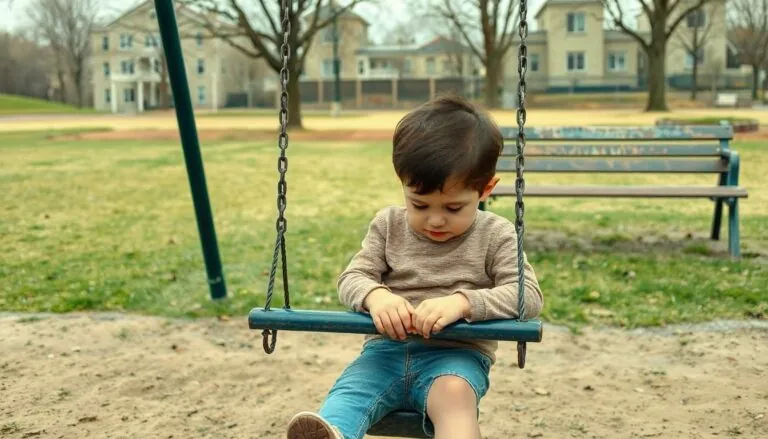Parenting can feel like riding an emotional rollercoaster while juggling flaming torches – especially when tantrums and meltdowns become daily events. But what if there was a way to maintain calm even when your toddler’s throwing their third spaghetti plate on the floor?
Enter scream-free parenting, a revolutionary approach that’s transforming households from chaotic battlegrounds into peaceful sanctuaries. This method isn’t about whispering or tiptoeing around your kids – it’s about managing your own reactions and emotions effectively while teaching children valuable life skills. Parents who’ve embraced this technique report less stress, better relationships with their children and fewer instances of wanting to hide in the pantry with a secret chocolate stash.
Table of Contents
ToggleWhat Is Scream Free Parenting?
Scream-free parenting focuses on emotional regulation and self-awareness to create a calmer family environment. This approach emphasizes parents managing their own reactions instead of trying to control their children’s behavior through yelling.
Core Principles and Philosophy
The foundation of scream-free parenting rests on three key principles: self-regulation, authenticity and mutual respect. Parents learn to pause before reacting to challenging situations by identifying their emotional triggers. The method emphasizes setting clear boundaries while maintaining emotional composure during conflicts. Parents practice responding rather than reacting by implementing techniques like deep breathing, time-outs for themselves and mindful communication. This approach recognizes that a parent’s anxiety, frustration or anger directly impacts their children’s behavior patterns.
Benefits for the Whole Family
Implementing scream-free parenting creates positive changes throughout the family dynamic. Children develop better emotional regulation skills by observing their parents’ calm responses. Family conversations become more productive with reduced tension and defensive reactions. Parents report experiencing decreased stress levels and improved relationships with their children. The home environment transforms into a space where family members feel safe expressing their emotions without fear of explosive reactions. Children display increased confidence in problem-solving abilities when parents model composed responses to challenges.
Taking Control of Your Own Emotions
Emotional control forms the cornerstone of scream-free parenting. Parents who master their emotional responses create a foundation for peaceful family interactions through self-awareness and intentional reactions.
Understanding Your Triggers
Emotional triggers manifest in specific situations that provoke intense parental reactions. Common triggers include repeated requests, sibling conflicts, homework battles, bedtime resistance or public tantrums. Parents benefit from maintaining a trigger journal to track situations that spark anger, frustration or anxiety. Recording these instances helps identify patterns in both parent and child behaviors. Physical signs of triggering include increased heart rate, muscle tension, shallow breathing or clenched fists. Environmental factors like lack of sleep, hunger or work stress amplify emotional sensitivity to triggers. Recognition of these warning signals enables parents to implement coping strategies before reactions escalate.
Practicing Self-Regulation
Self-regulation techniques transform automatic reactions into mindful responses. Deep breathing exercises activate the body’s relaxation response in 60-90 seconds. Taking a 2-minute break in another room provides space for emotion processing. Parents practice emotional regulation through methods like counting to 10, progressive muscle relaxation or visualization. Setting up a designated calm-down space equipped with stress balls, journals or meditation apps supports consistent practice. Regular exercise, adequate sleep and proper nutrition strengthen overall emotional resilience. Scheduling 15-minute daily relaxation sessions builds the mental muscles needed for challenging parenting moments. Consistent self-regulation practice leads to automatic implementation during triggering situations.
Creating Healthy Boundaries
Establishing clear boundaries creates a structured environment where both parents and children understand expectations and limits. Setting and maintaining these boundaries forms the foundation of scream-free parenting by promoting consistency and respect.
Setting Clear Expectations
Children thrive in environments with defined limits and consistent rules. Parents establish these boundaries by communicating specific expectations for different situations such as morning routines, mealtime behaviors, or bedtime schedules. A family meeting provides an opportunity to discuss household rules, acceptable behaviors, and consequences. Visual aids like charts or calendars help younger children understand daily expectations. Parents maintain consistency by expressing rules in positive terms like “walk inside the house” instead of “no running.” Clear expectations extend to personal space, time management, and interpersonal interactions between family members.
Following Through With Consequences
Consistent enforcement of boundaries reinforces the importance of family rules and expectations. Parents implement consequences immediately after rule violations to create a direct connection between actions and outcomes. Natural consequences teach valuable lessons – a child who refuses to wear a coat experiences cold weather firsthand. Logical consequences align with the behavior – extended screen time results in reduced privileges the following day. Parents communicate consequences calmly and avoid threats or ultimatums. A consequence chart posted in a common area helps children understand the direct relationship between their choices and outcomes. Time-based consequences remain short and appropriate for the child’s age – 5 minutes for younger children or 15 minutes for teenagers.
Building Better Communication
Effective communication forms the foundation of scream-free parenting by creating an environment of mutual understanding between parents and children. The following techniques enhance parent-child interactions and foster meaningful dialogue.
Active Listening Techniques
Active listening strengthens parent-child relationships through focused attention and genuine engagement. Parents demonstrate active listening by maintaining eye contact at their child’s level through kneeling or sitting. Reflecting emotions back to children validates their feelings: “I hear you’re frustrated about not being able to play right now.” Paraphrasing children’s statements ensures accurate understanding while avoiding interruptions encourages complete expression of thoughts. Strategic questions like “What happened next?” or “How did that make you feel?” show investment in the conversation. Body language cues such as nodding head movements indicate attentiveness without verbal interference.
Having Calm Conversations
Parents initiate calm conversations by choosing appropriate times when both parties feel relaxed and receptive. Speaking in soft tones while maintaining a neutral facial expression helps children feel safe sharing their thoughts. Parents use “I” statements to express their feelings: “I feel worried when you climb on tall furniture.” Setting clear expectations during discussions creates structure: “Let’s take turns talking about what happened at school today.” Acknowledging children’s perspectives through phrases like “I understand you wanted to keep playing” builds trust. Regular check-ins throughout the day provide opportunities for open dialogue about feelings events experiences.
Teaching Emotional Intelligence
Emotional intelligence forms the foundation of scream-free parenting by enabling children to understand their feelings. Parents who focus on emotional intelligence create resilient children capable of managing their emotions effectively.
Modeling Appropriate Behavior
Parents demonstrate emotional intelligence through their responses to challenging situations. A parent who takes deep breaths during frustrating moments teaches children practical coping strategies. Expressing emotions verbally shows children how to communicate feelings effectively: “I feel frustrated when my work gets interrupted” instead of slamming doors. Parents create teaching moments by narrating their emotional processes: “I’m taking five minutes to calm down before we discuss this.” Setting examples of emotional regulation includes:
- Practicing self-calming techniques in front of children
- Acknowledging mistakes openly
- Using positive self-talk during stressful situations
- Demonstrating problem-solving skills in real-time
- Showing empathy toward others’ emotions
Helping Children Process Feelings
Parents support emotional development by creating safe spaces for children to express themselves. Validating emotions starts with acknowledging feelings without judgment: “You’re angry because your brother took your toy.” Open-ended questions encourage children to explore their emotions: “How did that make you feel?” Parents enhance emotional vocabulary through specific feeling words:
- Naming complex emotions (frustrated disappointed anxious)
- Creating emotion charts with facial expressions
- Reading books about feelings together
- Playing emotion-based games
- Using feeling check-ins throughout the day
Consistent emotional coaching helps children develop awareness about their feelings. Parents guide children through emotional moments by remaining present identifying triggers exploring solutions together.
Managing Common Parenting Challenges
Common parenting challenges require specific strategies aligned with scream-free principles to maintain a peaceful home environment. Effective management of these situations depends on consistent, calm responses that model emotional regulation for children.
Dealing With Tantrums
Tantrums represent a child’s expression of overwhelming emotions through physical outbursts crying screaming. Parents maintain their composure by stepping back three feet from the situation creating physical distance. A calm voice paired with simple phrases like “I see you’re upset” acknowledges the child’s feelings without escalating the situation. Taking five deep breaths before responding gives parents time to regulate their own emotions. Setting up a designated calm-down corner with soft pillows fidget toys enables children to self-soothe during emotional moments. Parents stay nearby offering silent support while the child works through their feelings. Once the tantrum subsides parents engage in a brief discussion about what triggered the outburst helping children identify their emotions.
Handling Sibling Conflicts
Sibling conflicts stem from competition for attention resources space. Parents establish clear rules for respectful interaction between siblings posting them in visible locations. Creating individual special time slots for each child reduces competition for parental attention. A conflict resolution system using “peace tables” gives siblings a designated space to work out disagreements. Teaching phrases like “I feel frustrated when” helps children express emotions without blame. Parents avoid taking sides implementing natural consequences for aggressive behavior from any child. Scheduling 15-minute daily connection time between siblings builds positive relationships through structured activities. A rotation system for shared toys spaces minimizes territorial disputes. Parents praise cooperative behavior catching siblings being kind to reinforce positive interactions.
Conclusion
Scream-free parenting isn’t just about reducing noise—it’s about creating lasting positive change in family dynamics. By focusing on emotional regulation managing triggers and establishing clear boundaries parents can transform their home environment into a peaceful space where everyone thrives.
The journey to becoming a scream-free parent takes time patience and dedication. But the rewards are invaluable: stronger parent-child relationships better emotional intelligence and a calmer more connected family unit. When parents commit to this approach they’re investing in their children’s emotional well-being and setting them up for success in managing their own relationships later in life.
Remember that progress not perfection is the goal. Every step toward calmer parenting is a victory worth celebrating.





